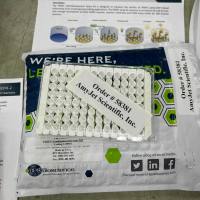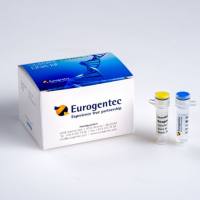Practical Methods for Molecular In Vivo Optical Imaging
互联网
- Abstract
- Table of Contents
- Materials
- Figures
- Literature Cited
Abstract
Traditional approaches for translating observations of molecular events into the context of a living organism have suffered from the requirements for either sacrificing animals at multiple time points prior to labor?intensive analyses of multiple tissues, or have relied on subjective observations or measurements of the animals over time. Recently, a plethora of dedicated animal?imaging modalities and the release of modified clinical imaging devices dedicated for animal imaging have allowed for the design of quantitative real?time experiments incorporating fewer animals and providing whole?animal analyses. Of these modalities, optical imaging (bioluminescence and fluorescence) has emerged as a powerful research tool, allowing investigators with limited whole?animal imaging expertise to rapidly and inexpensively translate models produced in cellular assays into the context of a living animal. Here we will outline the steps necessary for translation of models established in culture systems into rodents. Curr. Protoc. Cytom. 59:12.24.1?12.24.11. © 2012 by John Wiley & Sons, Inc.
Keywords: bioluminescence; fluorescence; whole animal; molecular imaging; non?invasive reporter
Table of Contents
- Introduction
- Basic Protocol 1: Bioluminescence Imaging of Adoptively Transferred Eukaryotic Cells
- Support Protocol 1: Lentiviral Labeling of Cell Lines
- Commentary
- Literature Cited
- Figures
Materials
Basic Protocol 1: Bioluminescence Imaging of Adoptively Transferred Eukaryotic Cells
Materials
Support Protocol 1: Lentiviral Labeling of Cell Lines
Materials
|
Figures
-
Figure 12.24.1 Different stage heights provide different fields of view, such that multiple animals may be imaged at one time (high throughput) or a single region of one animal may be imaged (high resolution). View Image -
Figure 12.24.2 (A ) Representative image produced for mice with luciferase‐labeled ovarian cancer cell line implanted into the peritoneal cavity. Individual tumor nodules can be visualized. (B ) The tumor burden from these mice was quantified as a measure of light output and plotted over time (with each graph representing an individual mouse implanted with the same tumor cell line). View Image
Videos
Literature Cited
| Literature Cited | |
| Contag, C.H. and Bachmann, M.H. 2002. Advances in in vivo bioluminescence imaging of gene expression. Annu. Rev. Biomed. Eng. 4:235‐260. | |
| Shaner, N.C., Steinbach, P.A., and Tsien, R.Y. 2005. A guide to choosing fluorescent proteins. Nat. Methods 2:905‐909. | |
| Thorne, S.H. and Contag, C.H. 2005. Using in vivo bioluminescence imaging to shed light on cancer biology. Proc. IEEE 93:750‐762. | |
| Villanueva, F.S. 2008. Molecular imaging of cardiovascular disease using ultrasound. J. Nucl. Cardiol. 15:576‐586. | |
| Zhao, H., Doyle, T.C., Coquoz, O., Kalish, F., Rice, B.W., and Contag, C.H. 2005. Emission spectra of bioluminescent reporters and interaction with mammalian tissue determine the sensitivity of detection in vivo. J. Biomed. Opt. 10:41210. |






